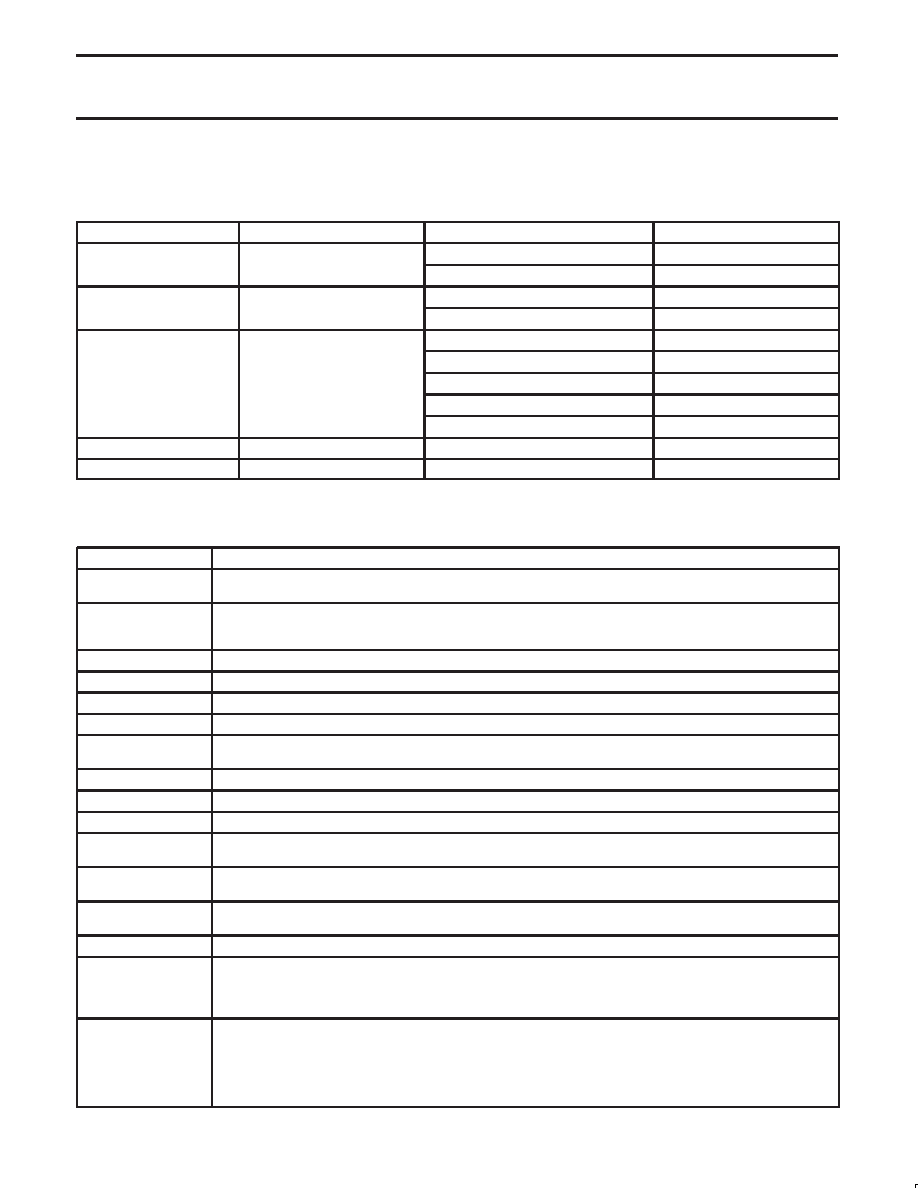- 您現(xiàn)在的位置:買賣IC網(wǎng) > PDF目錄24822 > 935266671518 (NXP SEMICONDUCTORS) 1 CHANNEL(S), 400M bps, SERIAL COMM CONTROLLER, PQFP144 PDF資料下載
參數(shù)資料
| 型號(hào): | 935266671518 |
| 廠商: | NXP SEMICONDUCTORS |
| 元件分類: | 微控制器/微處理器 |
| 英文描述: | 1 CHANNEL(S), 400M bps, SERIAL COMM CONTROLLER, PQFP144 |
| 封裝: | 20 X 20 MM, 1.40 MM HEIGHT, PLASTIC, MS-026, SOT-486-1, LQFP-144 |
| 文件頁(yè)數(shù): | 31/83頁(yè) |
| 文件大?。?/td> | 316K |
| 代理商: | 935266671518 |
第1頁(yè)第2頁(yè)第3頁(yè)第4頁(yè)第5頁(yè)第6頁(yè)第7頁(yè)第8頁(yè)第9頁(yè)第10頁(yè)第11頁(yè)第12頁(yè)第13頁(yè)第14頁(yè)第15頁(yè)第16頁(yè)第17頁(yè)第18頁(yè)第19頁(yè)第20頁(yè)第21頁(yè)第22頁(yè)第23頁(yè)第24頁(yè)第25頁(yè)第26頁(yè)第27頁(yè)第28頁(yè)第29頁(yè)第30頁(yè)當(dāng)前第31頁(yè)第32頁(yè)第33頁(yè)第34頁(yè)第35頁(yè)第36頁(yè)第37頁(yè)第38頁(yè)第39頁(yè)第40頁(yè)第41頁(yè)第42頁(yè)第43頁(yè)第44頁(yè)第45頁(yè)第46頁(yè)第47頁(yè)第48頁(yè)第49頁(yè)第50頁(yè)第51頁(yè)第52頁(yè)第53頁(yè)第54頁(yè)第55頁(yè)第56頁(yè)第57頁(yè)第58頁(yè)第59頁(yè)第60頁(yè)第61頁(yè)第62頁(yè)第63頁(yè)第64頁(yè)第65頁(yè)第66頁(yè)第67頁(yè)第68頁(yè)第69頁(yè)第70頁(yè)第71頁(yè)第72頁(yè)第73頁(yè)第74頁(yè)第75頁(yè)第76頁(yè)第77頁(yè)第78頁(yè)第79頁(yè)第80頁(yè)第81頁(yè)第82頁(yè)第83頁(yè)

Philips Semiconductors
Preliminary specification
PDI1394L41
1394 content protection AV link layer controller
2000 Dec 01
34
12.6.2.7
Asynchronous Receive Packet Formats
This section describes the asynchronous receive packet formats. Four basic asynchronous data packet formats and one confirmation format exist:
Table 2. Asynchronous Data Packet Formats
ITEM
FORMAT
USAGE
TRANSACTION CODE
1
No packet data
Quadlet read requests
4
1
No-packet data
Quadlet/block write responses
2
Quadlet packet
Quadlet write requests
0
2
Quadlet packet
Quadlet read responses
6
Block read requests
5
Block write requests
1
3
Block Packet
Block read responses
7
Lock requests
9
Lock responses
Bhex
4
Self-ID / PHY packet
Concatenated self-ID / PHY packets
Ehex
5
Confirmation packet
Confirmation of packet transmission
8
Each packet format uses several fields. More information about most of these fields can be found in the 1394 specification.
Table 3.
Asynchronous Receive Fields
Field Name
Description
destinationID
This field is the concatenation of busNumbers (or all ones for “l(fā)ocal bus”) and nodeNumbers (or all ones for
broadcast) for this node.
tLabel
This field is the transaction label, which is used to pair up a response packet with its corresponding request packet.
tLables are also used as identifiers to associate a Link data confirmation (see 12.6.2.13) with the corresponding
request, response, or asynchronous stream packet.
rt
The retry code of the received packet; see the 1394 specification.
tCode
The transaction code for this packet.
priority
The priority level for this packet (0000 for cable environment).
sourceID
This is the node ID of the sender of this packet.
destinationOffsetHigh,
destinationOffsetLow
The concatenation of these two field addresses a quadlet in this node’s address space.
rCode
Response code for the received packet; see the 1394 specification.
quadlet data
For quadlet write requests and quadlet read responses, this field holds the data received.
dataLength
The number of bytes of data to be received in a block packet.
extendedTcode
If the tCode indicates a lock transaction, this specifies the actual lock action to be performed with the data in this
packet.
block data
The data received. If dataLength=0, no data will be written into the FIFO for this field. Regardless of the destination
or source alignment of the data, the first byte of the block will appear in the high order byte of the first quadlet.
padding
If the dataLength mod 4 is not zero, then zero-value bytes are added onto the end of the packet to guarantee that a
whole number of quadlets is sent.
u
Unsolicited response tag bit. This bit is set to one (1) if the received response was unsolicited.
ackSent
This field contains the acknowledge code that the link layer returned to the sender of the received packet. For
packets that do not need to be acknowledged (such as broadcasts) the field contains the acknowledge value that
would have been sent if an acknowledge had been required. The values for this field are listed in Table 4 (they also
can be found in the IEEE 1394 standard).
status
This field is used for asynchronous streams.
0000
Reserved.
0001
packet OK.
0010–1100
Reserved.
1101
Data CRC error and/or block size mismatch have been detected.
1110–1111
Reserved.
相關(guān)PDF資料 |
PDF描述 |
|---|---|
| 08-55-0134 | KK 156 TERMINAL CRIMP 18-24 AWG GOLD |
| 08-55-0133 | KK 156 TERMINAL CRIMP 18-24 AWG GOLD |
| 08-58-0111 | Connector |
| 08-50-0187 | Solderless Terminal; Body Material:Brass; Contact Plating:Tin; Series:6838; Wire Size (AWG):20-18; External Depth:0.11"; Lead Pitch:3.96"; Operating Temp. Min:0 C; Reel Quantity:7000; Voltage Rating:250V |
| 08-50-0189 | Solderless Terminal; Body Material:Brass; Contact Plating:Tin; Series:6838; Wire Size (AWG):20-18; External Depth:0.11"; Lead Pitch:3.96mm; Operating Temp. Min:0 C; Voltage Rating:250V RoHS Compliant: Yes |
相關(guān)代理商/技術(shù)參數(shù) |
參數(shù)描述 |
|---|---|
| 935267356112 | 制造商:NXP Semiconductors 功能描述:IC TEA1507PN |
| 935268081112 | 制造商:NXP Semiconductors 功能描述:SUB ONLY IC |
| 935268721125 | 制造商:NXP Semiconductors 功能描述:Buffer/Line Driver 1-CH Non-Inverting 3-ST CMOS 5-Pin TSSOP T/R |
| 935269304128 | 制造商:ST-Ericsson 功能描述:IC AUDIO CODEC W/TCH SCRN 48LQFP |
| 935269544557 | 制造商:NXP Semiconductors 功能描述:SUB ONLY TDA9587-2US1-V1.3 |
發(fā)布緊急采購(gòu),3分鐘左右您將得到回復(fù)。